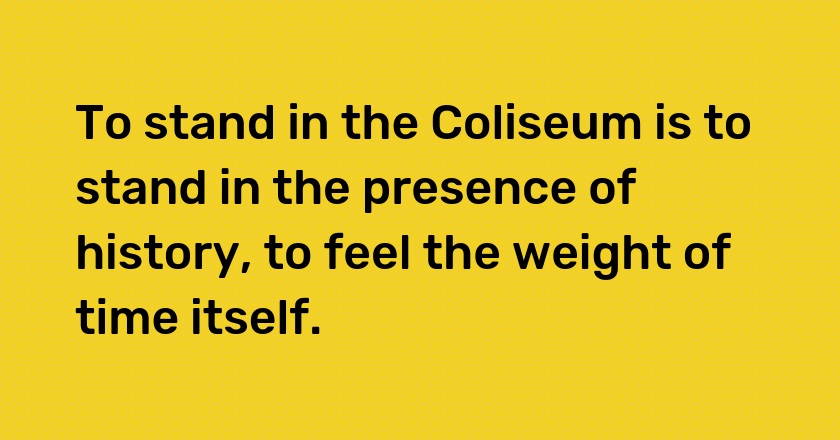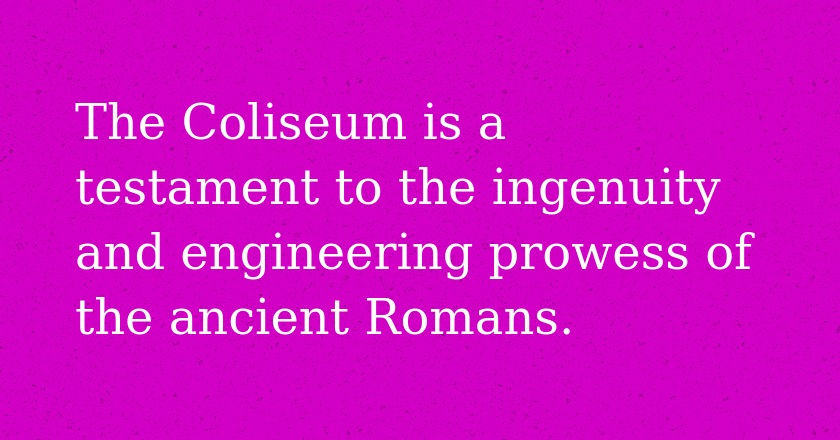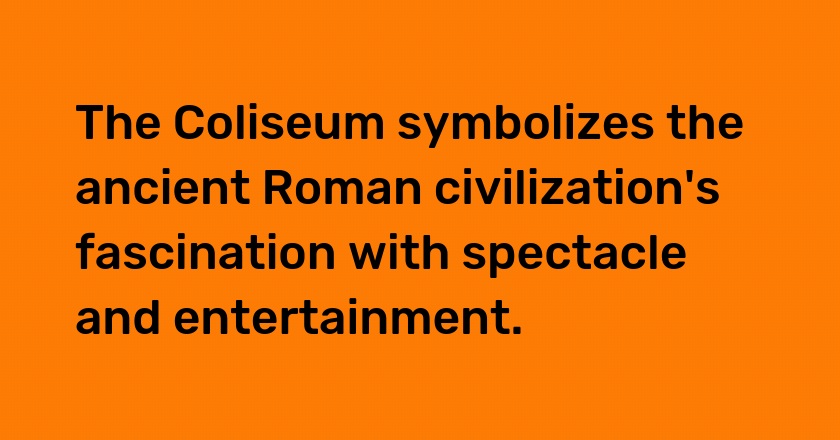The Coliseum is the key to the history of the Roman Empire.

To stand in the Coliseum is to stand in the presence of history, to feel the weight of time itself.
The Coliseum stands as a monument to both the grandeur and cruelty of the Roman Empire.
In Rome, the presence of the past is always very strong. The city is an exuberant and chaotic blend of the ancient and the modern.
While the Coliseum stands, Rome shall stand; when the Coliseum falls, Rome shall fall; when Rome falls, the world shall fall.
The Coliseum is the ultimate expression of all power in Rome.
We felt very grateful to the Romans. You see, they built the Coliseum for us.
The Coliseum was the place of death, the place of fight, the place of glory.
The Coliseum stands as a history lesson for all time.
As long as the Coliseum stands, Rome will stand; when the Coliseum falls, Rome will fall; when Rome falls, the world will fall.
The Coliseum remains an enduring symbol of Rome's imperial grandeur and cultural legacy.

The Coliseum is a testament to the ingenuity and engineering prowess of the ancient Romans.
Gladiator battles in the Coliseum were both a form of entertainment and a means of social control.

The Coliseum symbolizes the ancient Roman civilization's fascination with spectacle and entertainment.

We who are about to die salute you.
The Coliseum stands as a reminder of the heights of human achievement and the depths of human cruelty.
The Roman Coliseum was the largest amphitheater in the Roman world.
The architecture of the Coliseum is majestic, evoking both awe and reverence.